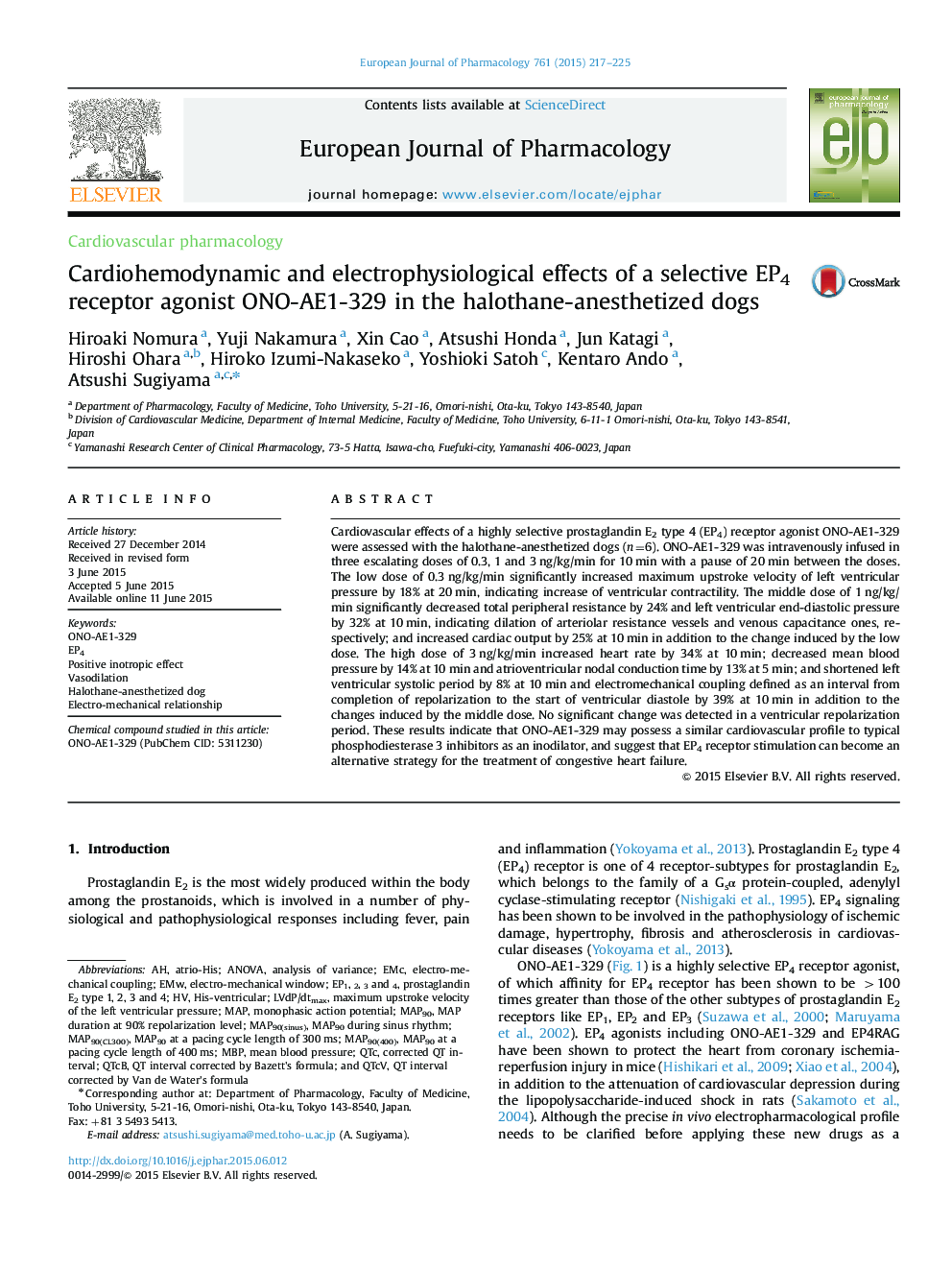| Article ID | Journal | Published Year | Pages | File Type |
|---|---|---|---|---|
| 5827056 | European Journal of Pharmacology | 2015 | 9 Pages |
Abstract
Cardiovascular effects of a highly selective prostaglandin E2 type 4 (EP4) receptor agonist ONO-AE1-329 were assessed with the halothane-anesthetized dogs (n=6). ONO-AE1-329 was intravenously infused in three escalating doses of 0.3, 1 and 3Â ng/kg/min for 10Â min with a pause of 20Â min between the doses. The low dose of 0.3Â ng/kg/min significantly increased maximum upstroke velocity of left ventricular pressure by 18% at 20Â min, indicating increase of ventricular contractility. The middle dose of 1Â ng/kg/min significantly decreased total peripheral resistance by 24% and left ventricular end-diastolic pressure by 32% at 10Â min, indicating dilation of arteriolar resistance vessels and venous capacitance ones, respectively; and increased cardiac output by 25% at 10Â min in addition to the change induced by the low dose. The high dose of 3Â ng/kg/min increased heart rate by 34% at 10Â min; decreased mean blood pressure by 14% at 10Â min and atrioventricular nodal conduction time by 13% at 5Â min; and shortened left ventricular systolic period by 8% at 10Â min and electromechanical coupling defined as an interval from completion of repolarization to the start of ventricular diastole by 39% at 10Â min in addition to the changes induced by the middle dose. No significant change was detected in a ventricular repolarization period. These results indicate that ONO-AE1-329 may possess a similar cardiovascular profile to typical phosphodiesterase 3 inhibitors as an inodilator, and suggest that EP4 receptor stimulation can become an alternative strategy for the treatment of congestive heart failure.
Keywords
Related Topics
Life Sciences
Neuroscience
Cellular and Molecular Neuroscience
Authors
Hiroaki Nomura, Yuji Nakamura, Xin Cao, Atsushi Honda, Jun Katagi, Hiroshi Ohara, Hiroko Izumi-Nakaseko, Yoshioki Satoh, Kentaro Ando, Atsushi Sugiyama,
